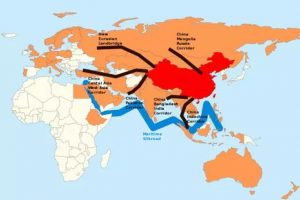Exploring the Belt & Road with Yenching Academy
To get a deeper look into the headlines of China’s Belt & Road, GEI led a 4-session workshop at Peking University’s Yenching Academy, called “From the Silk Road to the Belt and Road: Conceptions, Strategies and Challenges for Solving China’s Over Capacity Problems.”
In each workshop session, GEI experts worked with scholars from both Yenching Academy and other departments of Peking University to dig into the political, economic and environmental foundations to the Belt and Road.

Photo Credit: GEI
As we see it, the Belt and Road initiative is a chance for China to take a big, green step forward.
Through the Belt and Road, China can scale up its domestic low-carbon development, ensure that overseas investments follow green finance mechanisms, and work with developing countries to achieve a more sustainable future.
Thanks to Yenching Academy for working with us this past semester!
We look forward to working with these excellent students again soon!
Behind China’s “Going Out” Policy
Yenching Scholars learned how the Belt and Road connects to China’s entire development strategy.
Environmental & Social Challenges of China’s Overseas Investment & Trade
In this session, we aimed to determine which of the many stakeholders is the most critical to ensuring Chinese overseas investments were environmentally-sound.
The scholars were definitely on the right path when they emphasized the importance of the Chinese government and host government to mitigate environmental and social risk. In fact, GEI has successfully facilitated important guidelines for social and environmental safeguards.
In our discussion, we also focused on the great potential of Chinese companies to usher in the next stage of green development.
Renewable Energy in Belt & Road Countries

What are the main challenges for renewable energy integration? And how can developing countries use more renewable energy to power? Our third workshop answered these questions by focusing on how China is leveraging its progress and supply of renewable energy – namely solar and wind – in the developing countries.
We also shared our exciting work to start a low-carbon development town in Sri Lanka – the first of such projects in the country and along the Belt and Road. Dr. Xu explained that in order for more low-carbon development to occur, projects must undergo a thorough investigation stage. In this stage, it’s possible to assess the energy integration challenges as well as get the right stakeholders involved.
The Potential Future Paths of the Belt and Road
The fourth session illuminated the potential future paths of this massive investment project. This workshop broke the process of Belt and Road policymaking into 5-parts: examination & approval, credit support, foreign exchange, insurance services and taxation. We then explored how the Chinese government has amended each of these parts to encourage and support companies to get involved in the Belt and Road.
The workshop group looked at the guidelines and policies passed from 2016 to now, as well as a forthcoming policy, that will leverage environmental sustainability factors in these policies. Throughout the workshop, scholars asked many questions and ultimately determined the gaps and opportunities for stakeholders and policies to achieve a green Belt and Road.

Photo Credit GEI
If you like what you read, be sure to contact us to set up your own workshop.
GEI is now accepting inquiries to teach special workshops or classes about environmental challenges facing Beijing, China, and the world.
Get in touch with Kendall ( kendall@geichina.org ) to start brainstorming today.

